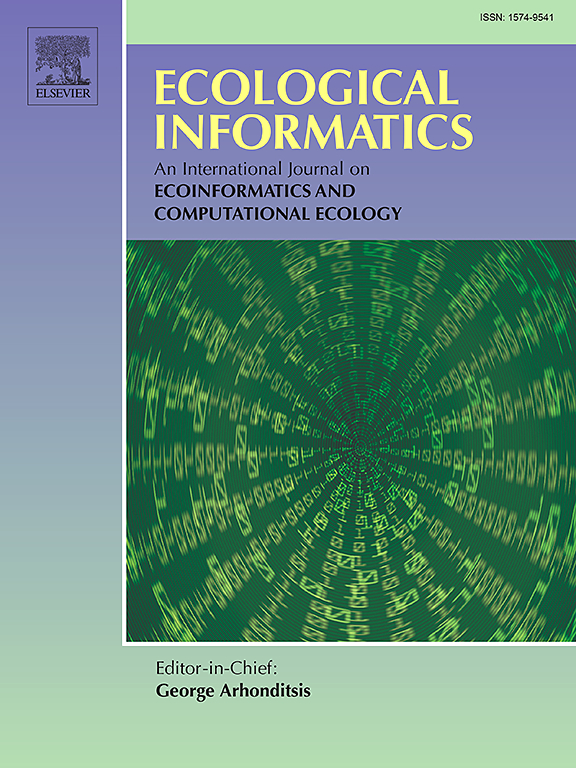Improving the prediction of streamflow in large watersheds based on seasonal trend decomposition and vectorized deep learning models
IF 5.8
2区 环境科学与生态学
Q1 ECOLOGY
引用次数: 0
Abstract
Accurate streamflow prediction is essential for water resource management and ecological conservation. With climate change and human activities intensifying extreme weather events, the risks associated with floods have grown, threatening both socioeconomic robustness and ecological integrity. Conventional prediction methods, such as physical and statistical models, often struggle to capture the complex nonlinear and nonstationary characteristics of streamflow. To address this challenge, this study presents a vectorized hybrid STL-LSTM-GRU-Transformer model designed to enhance prediction accuracy and stability. The approach begins by applying seasonal-trend decomposition using loess (STL) to separate streamflow data into trend, seasonal, and residual components. These components are then modeled independently: long short-term memory (LSTM) and convolutional neural networks (CNN) handle trend and seasonal patterns, while gated recurrent units (GRU) and Transformer process residual fluctuations. Furthermore, the model incorporates the Runoff process vectorization (RPV) method alongside vectorization techniques to improve sensitivity to extreme events. Evaluated on 2010–2022 data from six Jialing River stations, the model achieves 0.9991 (NSE), outperforming 12 benchmarks. SHAP analysis identifies dew point temperature (26.7 % contribution) and solar radiation (15.7 %) as key drivers, while kernel density estimation provides reliable probabilistic forecasts (PICP = 0.90 at 95 % CI). Demonstrating robust performance in flood-drought transition prediction (NSE > 0.9983), this approach contributes valuable insights for advancing flood early warning systems and hydro-ecological security.

基于季节趋势分解和矢量化深度学习模型的大流域流量预测改进
准确的流量预测对水资源管理和生态保护至关重要。随着气候变化和人类活动加剧极端天气事件,与洪水相关的风险增加,威胁到社会经济的稳健性和生态的完整性。传统的预测方法,如物理和统计模型,往往难以捕捉复杂的非线性和非平稳流的特征。为了解决这一挑战,本研究提出了一种矢量化混合STL-LSTM-GRU-Transformer模型,旨在提高预测精度和稳定性。该方法首先使用黄土(STL)进行季节趋势分解,将流量数据分为趋势、季节和剩余成分。然后对这些组件进行独立建模:长短期记忆(LSTM)和卷积神经网络(CNN)处理趋势和季节模式,而门控循环单元(GRU)和变压器处理剩余波动。此外,该模型结合了径流过程矢量化(RPV)方法和矢量化技术,以提高对极端事件的敏感性。对嘉陵江6个站点2010-2022年的数据进行评估,该模型达到0.9991 (NSE),优于12个基准。SHAP分析确定露点温度(贡献26.7%)和太阳辐射(15.7%)是关键驱动因素,而核密度估计提供了可靠的概率预测(PICP = 0.90, 95% CI)。在水旱过渡预测中表现出稳健的性能(NSE >;0.9983),该方法为推进洪水预警系统和水文生态安全提供了宝贵的见解。
本文章由计算机程序翻译,如有差异,请以英文原文为准。
求助全文
约1分钟内获得全文
求助全文
来源期刊

Ecological Informatics
环境科学-生态学
CiteScore
8.30
自引率
11.80%
发文量
346
审稿时长
46 days
期刊介绍:
The journal Ecological Informatics is devoted to the publication of high quality, peer-reviewed articles on all aspects of computational ecology, data science and biogeography. The scope of the journal takes into account the data-intensive nature of ecology, the growing capacity of information technology to access, harness and leverage complex data as well as the critical need for informing sustainable management in view of global environmental and climate change.
The nature of the journal is interdisciplinary at the crossover between ecology and informatics. It focuses on novel concepts and techniques for image- and genome-based monitoring and interpretation, sensor- and multimedia-based data acquisition, internet-based data archiving and sharing, data assimilation, modelling and prediction of ecological data.
 求助内容:
求助内容: 应助结果提醒方式:
应助结果提醒方式:


